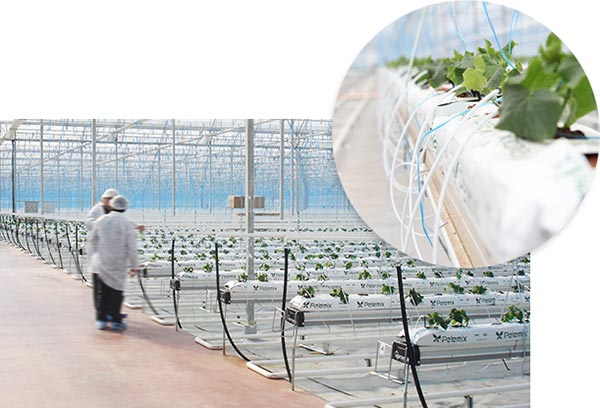
Hydroponics is defined as:
Irrigation system whereby crop roots receive a balanced nutrient solution dissolved in water with all the chemical elements needed for plant growth, which can grow directly on the mineral solution, or in an inert medium or substrate.
There are different types of hydroponic systems, classified as follows:
Hydroponic systems in liquid medium

These systems have not substrates for crop development, which is produced directly on the water-bearing systems by various plants as:
- Deep Flow Hydroponics: NGS.
- Floating systems: Floating shelves.
- Systems for water depth: NFT.
Hydroponic substrate systems
In these systems We grow using inert substrates irrigated by drip irrigation, subirrigation, or exudation. The most common substrates are perlite, rockwool, coconut fiber and peat.
- Crops benches or grooves.
- Growing up in a bag.
- Growing in individual containers or channels.
- Growing surface (sanded).
Aeroponic systems
Involves growing by systems where the root stay outdoors, in a container that kept it in the dark, where the nutrient solution is applied as an aerosol mist. The use of hydroponic systems is justified in cash crops that require high control of the production process, such as greenhouse cultivation of cucurbits, tomatoes, pepper and strawberry.
DRAINS IN HYDROPONICS:
Hydroponic systems require to specify a percentage of drainage, especially in hydroponic substrate systems, in order not to salinize the root environment especially for hydroponics saline waters use.
Depending on the use to be given to the drainage system are classified into:
Systems solution lost:
The drain water in these systems is not reused in production under hydroponics. It is normally used to irrigate other low plots under traditional irrigation systems, as they have unused nutrients not usual in hydroponic system.
ADVANTAGES OF HYDROPONIC SYSTEM
- Provides the root system of a constant humidity level all the time, regardless of weather or crop growth stage time.
- Reduce the risks of excessive irrigation, as the root suffocation
- Provides better planning and operation of the plantation.
- Optimize the cost of water and fertilizers.
- Ensures irrigation throughout the root zone.
- Significantly reduces the problems of diseases caused by soil pathogens
- Increases yields and improved production quality.
HYDROPONIC SYSTEM PARTS
- Greenhouse.
- Head of automated irrigation and support system of plants.
- Pumping equipment.
- Containers for Concentrated solutions of nutrients.
- Ducting fertigation application.
- Irrigation Scheduler.
- Receiver of drainage or effluent.
MATERIALS USED
Installation of PVC or PE irrigation and accessories needed. Depending on the type of hydroponic irrigation could have:
- Growing Tables.
- Culture Sacks
- Particular culture systems (NGS, NFT).
- Supporting canals cropping system.
- Drain pans.






